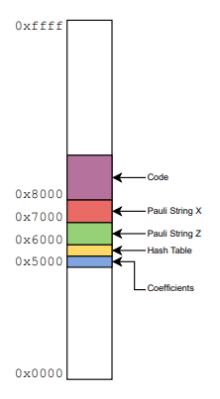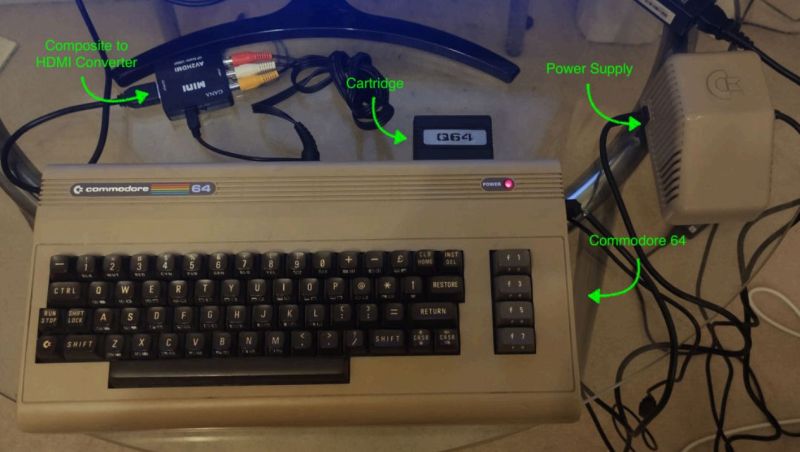
the implementation, as set within the address space of the Commodore 64 – about 15kB of the accessible 64kB RAM is used.
There’s been a lot of fuss about the ‘quantum advantage’ that would arise from the use of quantum processors and quantum systems in general. Yet in this high-noise, high-uncertainty era of quantum computing it seems fair to say that the advantage part is a bit of a stretch. Most recently an anonymous paper (PDF, starts at page 199) takes IBM’s claims with its 127-bit Eagle quantum processor to its ludicrous conclusion by running the same Trotterized Ising model on the ~1 MHz MOS 6510 processor in a Commodore 64. (Worth noting: this paper was submitted to Sigbovik, the conference of the Association for Computational Heresy.)
We previously covered the same claims by IBM already getting walloped by another group of researchers (Tindall et al., 2024) using a tensor network on a classical computer. The anonymous submitter of the Sigbovik paper based their experiment on a January 2024 research paper by [Tomislav Begušić] and colleagues as published in Science Advances. These researchers also used a classical tensor network to run the IBM experiment many times faster and more accurately, which the anonymous researcher(s) took as the basis for a version that runs on the C64 in a mere 15 kB of RAM, with the code put on an Atmel AT28C256 ROM inside a cartridge which the C64 then ran from.
The same sparse Pauli dynamics algorithm was used as by [Tomislav Begušić] et al., with some limitations due to the limited amount of RAM, implementing it in 6502 assembly. Although the C64 is ~300,000x slower per datapoint than a modern laptop, it does this much more efficiently than the quantum processor, and without the high error rate. Yes, that means that a compute cluster of Commodore 64s can likely outperform a ‘please call us for a quote’ quantum system depending on which linear algebra problem you’re trying to solve. Quantum computers may yet have their application, but this isn’t it, yet.
Thanks to [Stephen Walters] and [Pio] for the tip.
















“Of course, science is only valuable if it is replicable, so to support any replication studies of this work, source code will be available upon reasonable request to the author. In the spirit of SIGBOVIK, you may request either a copy handwritten on papyrus, a slideshow of blurry screenshots recorded on a VHS tape, or that I dictate it to you personally over the phone.”
I love all three options for access to the source code.
given the size, the dictate option is most likely the best option…
Are these people living under a rock? Have they not heard of the compact cassette?
Quantum computing is like Dark Matter. They each share a common property, perhaps the most common property possible: they don’t exist. For fans it means they can do anything. In the real world it means they don’t exist. That said, I do enjoy the rock’n’roll the young people are listening to these days.
Why have I not heard of the ACH before?
Computing speed, computational complexity and the granularity of time. These are the things I daydream about. I am reminded of Microsound by Curtis Roads whom speaks of audio and its magnitudes of scale in the temporal domain. Algorithms are similar, ask not whether we should, but ask if it would be illuminating or at least interesting to do so.
Good for you
I see the pic and all I think is can I borrow this setup to play Ultima?